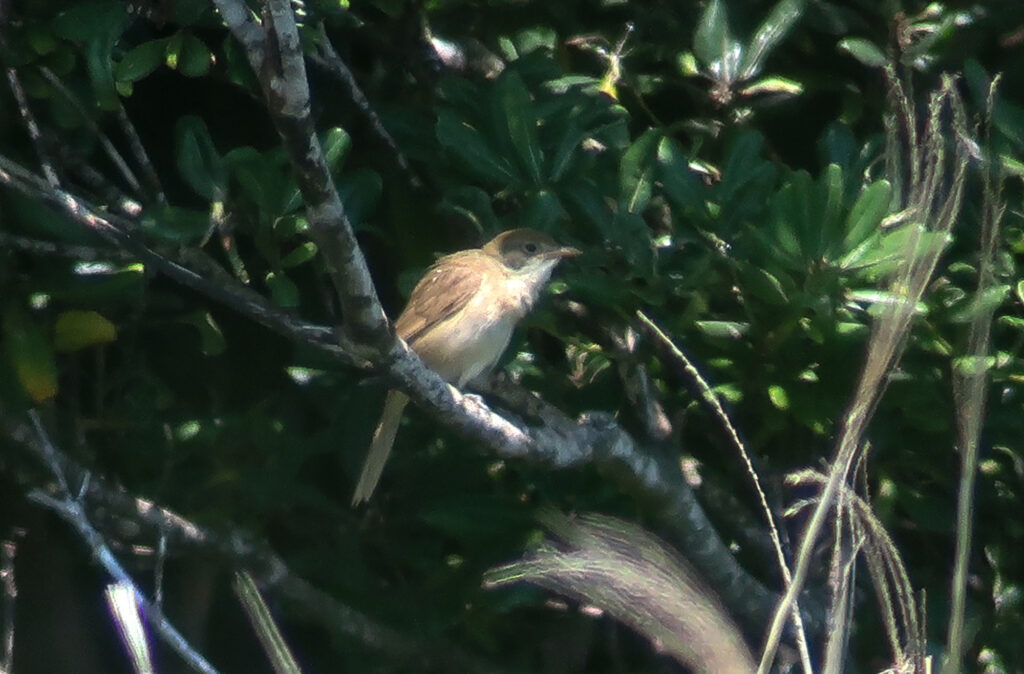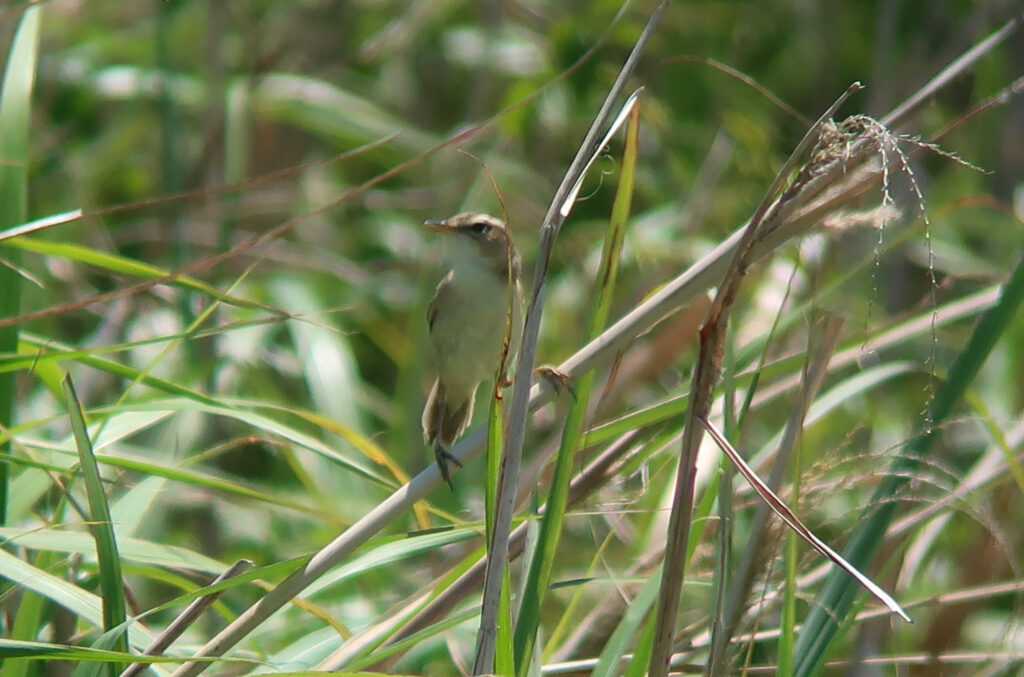Bird news from Leslie Hurteau
As May started, Spring migration was in full swing, with many interesting birds showing up on Jeju. Early May involved a weekend trip to nearby Chuja Island, which had a fair number of migrants, highlight being a Black Drongo. A short visit to the east coast of Jeju Island a week later found some lingering ducks and gulls, and of special note, the overwintering Caspian Tern still hanging around.

Throughout May, several trips were taken to Mara Island (Korea’s southern most point) in hopes to see a wide range of migrant (and vagrant) birds throughout the spring. Early May had plenty of flycatchers, namely Narcissus and Asian Brown, moving through, as well as a wide range of buntings: Tristram’s, Yellow-browed, Chestnut-eared, Chestnut, Yellow-breasted, and even small numbers of Pallas Reed and Yellow Buntings.

Black-winged Stilts began to become quite numerous in wetlands and reservoirs throughout the island. Otherwise, most shorebirds had mostly passed through by this point, aside from a few stragglers such as Lesser Sand-plovers, Whimbrels, Curlews, and Grey-tailed Tattlers. Common Greenshanks, Marsh Sandpipers, and Common Snipes were also found in small numbers.

Several types of egrets and herons had begun moving through, with Cattle, Intermediate, and Great Egrets coming in for their summer visits. Chinese Egrets and Chinese Pond Herons were found along coastal and wetland areas respectively as well.


Mid-May had a shift in migrants, with Kamchatka and Arctic Leaf Warblers moving through, replacing the groups of Sakhalin, Pale-legged, and Yellow Browed Leaf Warblers. With the exception of locally breeding Grey-backed Thrush, Thrush numbers began to drop with only a few Eyebrowed Thrush seen later in May. Black Paradise Flycatchers began to come in early May, as well as singing Styan’s Grasshopper Warblers on Mara Island. Tiger Shrikes, Brown Shrikes, Dollarbirds, and Black-naped Orioles were seen regularly by this point. While at least three of those species are relatively common on Mainland Korea, all four of these are only really found during spring and fall migration on Jeju Island.


Some stormy weather in Mid-May brought in some interesting rarities. Highlights included at least one Hair-crested Drongo seen on Mara Island. Several other rarities reported by members of the Jeju Wildlife Research Centre (제주야생동물연구센터) included a Besra (second or third national record?), White-bellied Green Pigeon, and Lesser Coucal, all of which were seen briefly but well documented.


Late May had more singing Styan’s Grasshopper Warblers, and small numbers of other migrants such as Black-browed Reed Warbler, Thick-billed Warbler, and lingering groups of Asian Brown, Dark-sided, and Grey-streaked Flycatchers. Seabirds such as Streaked Shearwaters and Short-tailed Shearwaters were seen several times during ferry crossings as well. A personal highlight was a Pheasant-tailed Jacana seen in a wetland in late May, a species known to breed on Jeju in the past. As May began to come to an end, so did the stream of migrants, with only a few trickles of interesting species moving through by the end of the month.



Looking at this year’s spring migration as a whole, it seems numbers of birds were somewhat lower than other years. This observation was shared among many birders in Korea this spring throughout all the major islands in the Yellow Sea (Baengnyeong, Eocheong, Gageo), as well as Jeju. One factor that may have contributed was the prominence of strong winds from the north for most of April and May. This may have made conditions less ideal for migrants to move through over the sea, with less winds in their favour. On the other hand, another possiblity was the lack of rain and relatively clear sunny weather throughout most of spring. Perhaps the weather may have made conditions too ideal for birds, so they didn’t feel the need to stop over on smaller islands enroute to their breeding sites in the north.
Whatever the cause may be, it’s worth noticing these patterns to help us understand species populations and migration patterns, as well as how species are coping with the increasing changes in climate throughout the world.
